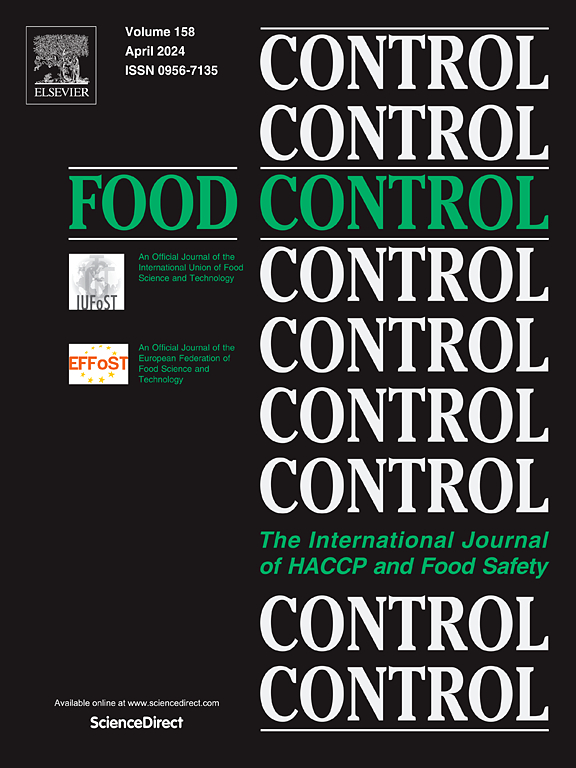Formulation optimization, antimicrobial mechanisms, and application of Amomum tsao-ko essential oil nanoemulsion
IF 5.6
1区 农林科学
Q1 FOOD SCIENCE & TECHNOLOGY
引用次数: 0
Abstract
This study aimed to develop a nanoemulsion based on Amomum tsao-ko Crevost et Lemaire (A. tsao-ko) essential oils (EOs) with enhanced packaging properties. A. tsao-ko was extracted using steam distillation, yielding approximately 42 main compounds, with cineolol as the most abundant (41.49 %). The optimal preparation process for the nanoemulsion (ATEON) was determined using response surface methodology (RSM). Disk diffusion assays confirmed that ATEON exhibited significant antibacterial activity against Escherichia coli and Staphylococcus aureus, with inhibition zone diameters of 1.12 ± 0.07 cm and 1.22 ± 0.17 cm, respectively. The antibacterial properties of ATEON can be due to its ability to disrupt bacterial cell membrane integrity, damage cell walls, and alter cell surface hydrophobicity. Additionally, preservation experiments demonstrated that chitosan (CS) film supplemented with ATEON more effectively preserved pork quality and extended shelf life than CS film alone. In conclusion, ATEON presents a promising active packaging material for fresh meat preservation.

砂仁精油纳米乳的配方优化、抑菌机理及应用
本研究旨在开发一种以草砂精油为基础的纳米乳液,并增强其包装性能。采用水蒸气蒸馏法提取草果,得到42种主要化合物,其中桉木酚含量最高(41.49%)。采用响应面法(RSM)确定了ATEON纳米乳的最佳制备工艺。圆盘扩散实验证实,ATEON对大肠杆菌和金黄色葡萄球菌具有显著的抑菌活性,抑菌圈直径分别为1.12±0.07 cm和1.22±0.17 cm。ATEON的抗菌特性可能是由于其破坏细菌细胞膜完整性、破坏细胞壁和改变细胞表面疏水性的能力。此外,保鲜实验表明,壳聚糖(CS)膜中添加ATEON比单独添加壳聚糖膜更有效地保存了猪肉的品质,延长了猪肉的保质期。综上所述,ATEON是一种很有前途的鲜肉保鲜活性包装材料。
本文章由计算机程序翻译,如有差异,请以英文原文为准。
求助全文
约1分钟内获得全文
求助全文
来源期刊

Food Control
工程技术-食品科技
CiteScore
12.20
自引率
6.70%
发文量
758
审稿时长
33 days
期刊介绍:
Food Control is an international journal that provides essential information for those involved in food safety and process control.
Food Control covers the below areas that relate to food process control or to food safety of human foods:
• Microbial food safety and antimicrobial systems
• Mycotoxins
• Hazard analysis, HACCP and food safety objectives
• Risk assessment, including microbial and chemical hazards
• Quality assurance
• Good manufacturing practices
• Food process systems design and control
• Food Packaging technology and materials in contact with foods
• Rapid methods of analysis and detection, including sensor technology
• Codes of practice, legislation and international harmonization
• Consumer issues
• Education, training and research needs.
The scope of Food Control is comprehensive and includes original research papers, authoritative reviews, short communications, comment articles that report on new developments in food control, and position papers.
 求助内容:
求助内容: 应助结果提醒方式:
应助结果提醒方式:


